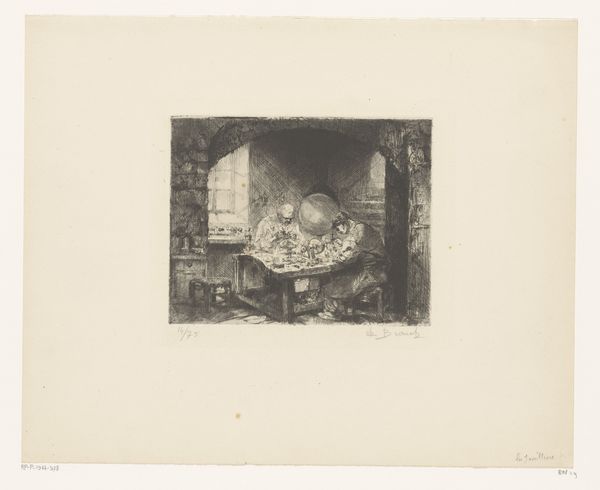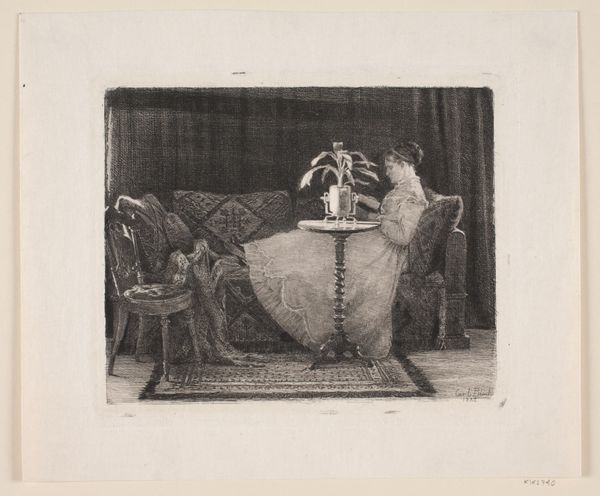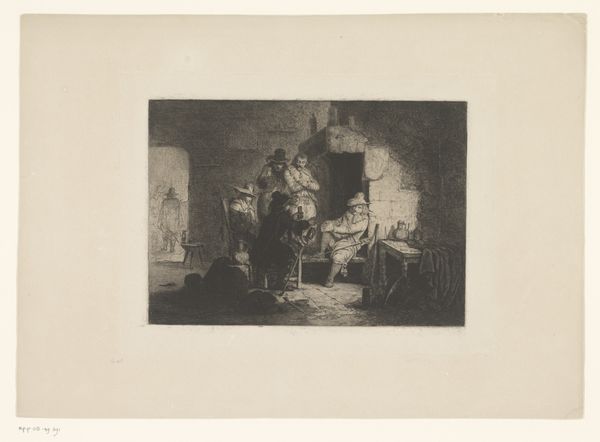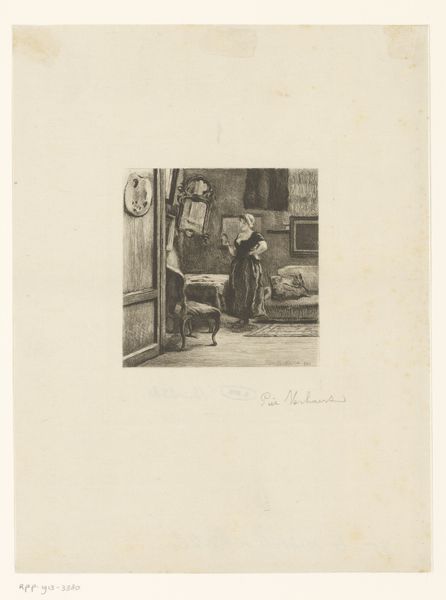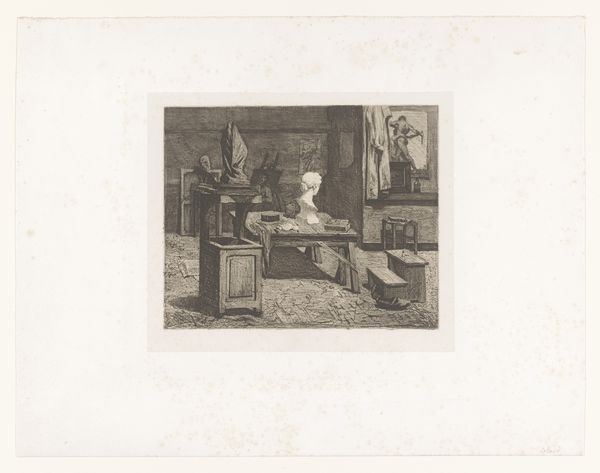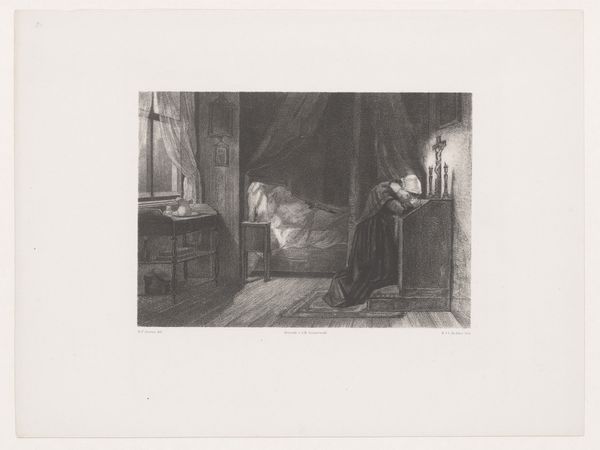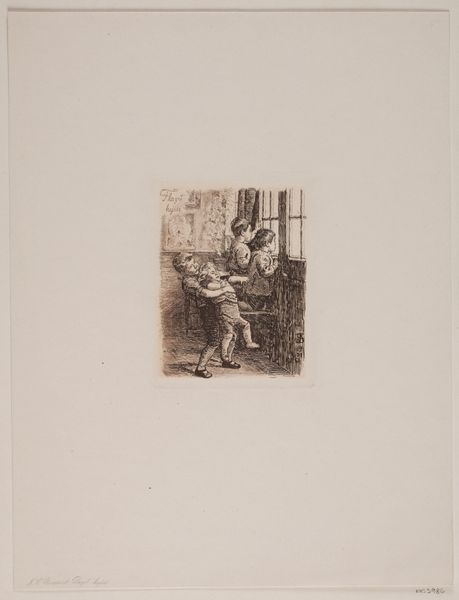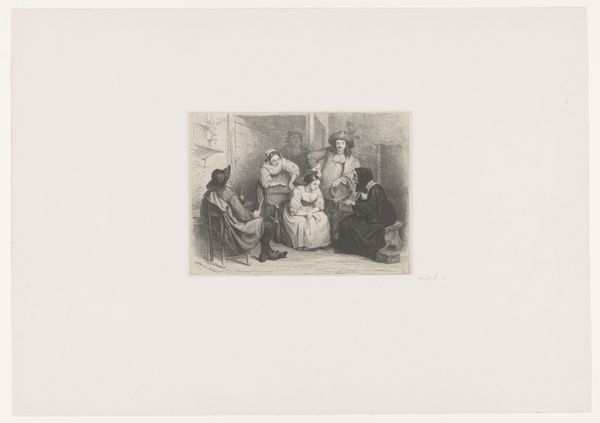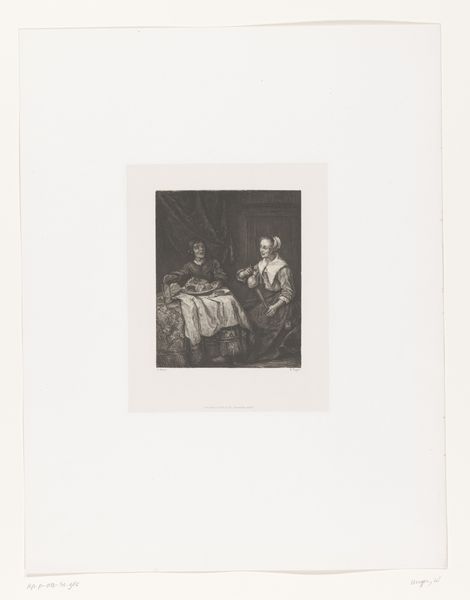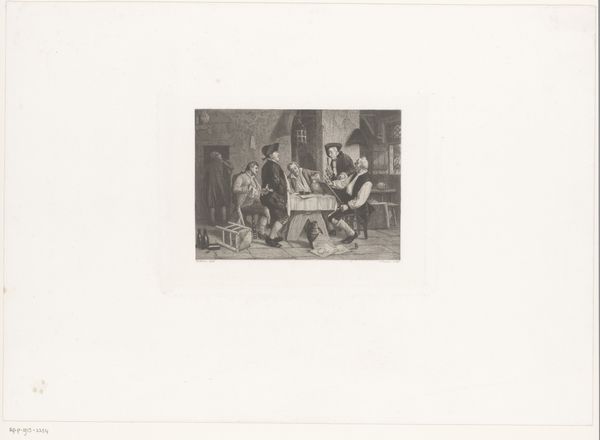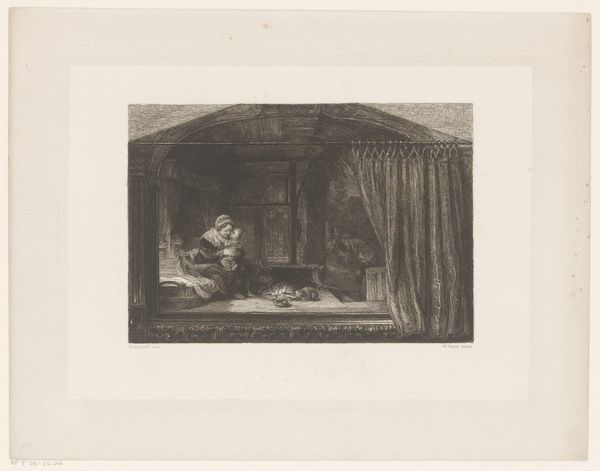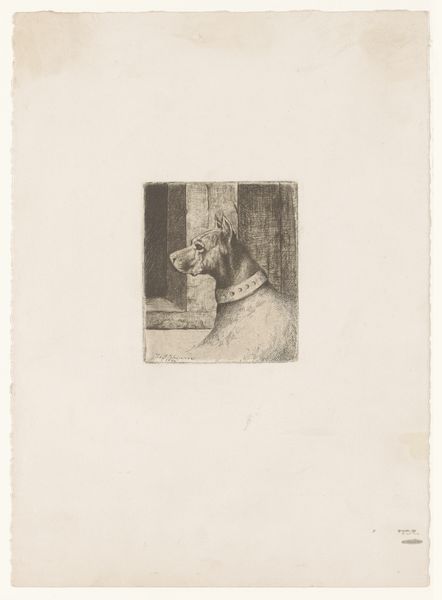
Dimensions: height 269 mm, width 357 mm
Copyright: Rijks Museum: Open Domain
Curator: This is "Oude man warmt zich bij de haard," or "Old man warming himself by the hearth" by Frederik Hendrik Weissenbruch, made sometime between 1850 and 1863. It’s currently held in the Rijksmuseum collection. Editor: A first impression? It's striking how self-contained the figure seems. A study in loneliness and perhaps even the indifference of domestic spaces to the inhabitant’s suffering. Curator: Observe how the artist constructs the composition. Weissenbruch meticulously arranges the figure, the chair, and the hearth, all within a limited range of tonal values, mostly greyscale. The eye is drawn to the bright glow of the fire juxtaposed with the darkness of the interior and the man's shadowed face. Editor: Yes, and consider what that positioning signifies. The man's warmth depends on this fire, a material condition controlled by a larger system of extraction, class, and privilege. What would this scene look like for someone without access to such comforts? The monochrome palette emphasizes a bleakness often ignored within conventional portrayals of domesticity. Curator: From a formalist perspective, the hatching and cross-hatching techniques employed to define form are quite remarkable. Weissenbruch manipulates line density to create an impressive illusion of depth, particularly in the rendering of the chair and the receding wall. The technical virtuosity shapes our reading of the subject itself. Editor: Perhaps, but for whom is this virtuosity performed? Academic art of the period served particular interests, reinforcing certain views of aging, class, and domestic life. The realism aesthetic here veils these underlying power dynamics in seemingly objective representation. Is he simply warming himself, or is something else being warmed, ideologically speaking? Curator: That reading invites interesting tensions, I agree. What truly holds is that Weissenbruch invites contemplation through contrasts, making us question what initially appears as simple observation. Editor: Yes. The warmth feels spectral and the intimacy compromised by all that is unsaid, all the structural inequality made invisible through shadow. An artwork for its time.
Comments
No comments
Be the first to comment and join the conversation on the ultimate creative platform.
